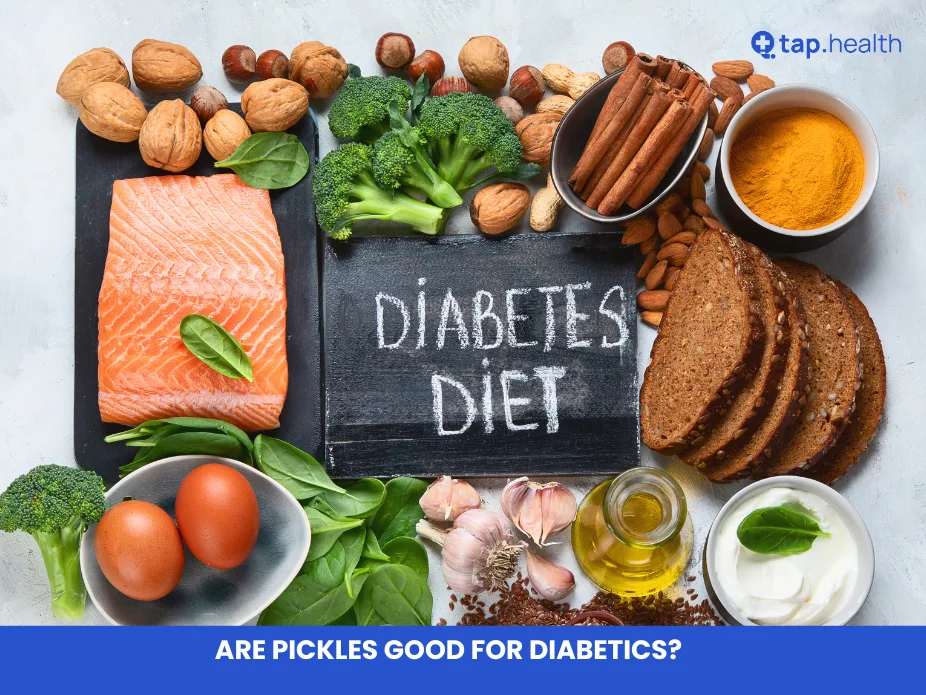You’ve probably heard the name Gary Brecka if you’ve been into health, biohacking, or the Modern Day Medicine podcast. He’s known for his bold claims about optimal health, longevity, and turning your body into a “high-performance machine.”
One of the biggest things he talks about?
Vitamin D3.
In fact, he doesn’t just call it a vitamin—he calls it the “master hormone.”
So, what vitamin D3 does Gary Brecka recommend?
Let’s break it down in simple, easy-to-understand language—no confusing science talk. You’ll learn:
- Why Brecka thinks vitamin D3 is so powerful
- What dose he recommends (and why it’s much higher than normal)
- The science behind his claims
- Who should (and shouldn’t) follow his advice
- And answers to all the top questions people are searching
We’ve researched this from trusted sources like the Mayo Clinic, Cleveland Clinic, National Institutes of Health (NIH), Harvard Health, and the Vitamin D Council to make sure everything is accurate and balanced.
Let’s dive in.
Who Is Gary Brecka?
Before we talk about vitamin D3, let’s talk about who Gary Brecka is.
Gary Brecka is a former mortician turned health expert, speaker, and co-host of the Modern Day Medicine podcast. He’s known for his “10 Pillars of Health” protocol—a system he says can help you live longer, feel better, and perform at your peak.
He’s not a medical doctor, but he has a background in physiology, anatomy, and toxicology, and he’s worked with thousands of people on health optimization.
His approach is bold. He believes most people are walking around with hidden deficiencies—especially in vitamin D3—and that fixing these can transform your health.
What Is the “10 Pillars of Health”?
Gary Brecka’s 10 Pillars of Health is a wellness protocol designed to fix the root causes of poor health. It’s not just about taking pills—it’s about balancing key systems in your body.
The 10 pillars include:
- Vitamin D3
- Magnesium
- Omega-3 Fatty Acids
- Probiotics
- Vitamin K2
- Zinc
- Collagen
- Electrolytes
- N-Acetyl Cysteine (NAC)
- Berberine
Each “pillar” supports a different part of your body—from your immune system to your gut, brain, and heart.
But vitamin D3 is Pillar #1—the most important one.
So, what vitamin D3 does Gary Brecka recommend?
Let’s get into it.
What Vitamin D3 Does Gary Brecka Recommend?
Gary Brecka doesn’t just recommend any vitamin D3—he recommends a high-dose, optimized form as part of his daily supplement stack.
Here’s the breakdown:
Form: Vitamin D3 (Cholecalciferol)
Not D2 (ergocalciferol). D3 is the form your body makes from sunlight and is more effective at raising blood levels.
Dosage: 5,000–10,000 IU per day
This is much higher than the standard recommended daily allowance (RDA), which is 600–800 IU for adults.
Brecka says most people are severely deficient and need high doses to reach optimal levels (50–80 ng/mL), not just “normal” levels.
Goal: Blood level of 50–80 ng/mL
Most labs say “normal” is 20–50 ng/mL, but Brecka argues that 50–80 ng/mL is where you get the best health benefits.
With Vitamin K2 and Magnesium
He always recommends taking D3 with vitamin K2 (MK-7) and magnesium because:
- K2 helps direct calcium to your bones (not your arteries)
- Magnesium is needed to activate vitamin D
Without them, high-dose D3 could be less effective or even risky.
Why Does Gary Brecka Call D3 the “Master Hormone”?
You might think of vitamin D as just a vitamin—but Brecka calls it a hormone, and he’s not alone.
Here’s why:
1. It’s Made in the Skin from Sunlight
Unlike most vitamins (which come only from food), your body makes vitamin D3 when your skin is exposed to UVB rays from the sun.
That’s more like how hormones are produced than how you absorb vitamins from food.
2. It Affects Nearly Every Cell in Your Body
Vitamin D receptors are found in brain, heart, muscles, immune cells, and more. That means D3 doesn’t just help bones—it influences:
- Immune function
- Mood and brain health
- Hormone balance
- Inflammation
- Cancer protection
3. It Regulates Gene Expression
Studies show vitamin D can turn over 2,000 genes on or off. That’s huge—it means it plays a role in how your body repairs itself, fights disease, and ages.
4. Low Levels Are Linked to Major Diseases
Research links low vitamin D to:
- Heart disease
- Diabetes
- Depression
- Autoimmune diseases
- Certain cancers
- Weak bones (osteoporosis)
So when Brecka calls D3 the “master hormone,” he means it’s a central regulator of your entire body’s health.
What’s the Difference Between “Normal” and “Optimal” Vitamin D Levels?
This is a key point in Brecka’s philosophy.
Standard Medical View:
- Deficient: Below 20 ng/mL
- Normal: 20–50 ng/mL
- Lab test used: 25-hydroxyvitamin D
Most doctors say if you’re above 20 ng/mL, you’re “fine.”
Gary Brecka’s View:
- Optimal: 50–80 ng/mL
- He says “normal” isn’t good enough—you need higher levels for peak performance, not just disease prevention.
Think of it like this:
- 20–50 ng/mL = not sick
- 50–80 ng/mL = high performance, strong immunity, better mood
He argues that because so many people live indoors, wear sunscreen, or live in northern climates, almost everyone is low—even if labs say they’re “normal.”
How Much Vitamin D3 Should You Take?
The amount you need depends on your current blood level.
General Guidelines:
| Below 20 ng/mL (Deficient) | 5,000–10,000 IU/day for 6–8 weeks, then retest |
| 20–30 ng/mL (Low) | 5,000 IU/day |
| 30–50 ng/mL (Normal) | 2,000–5,000 IU/day |
| 50–80 ng/mL (Optimal) | 1,000–2,000 IU/day for maintenance |
Note: These are general guidelines. Brecka recommends getting a blood test first.
Why Does Brecka Recommend So Much More Than the RDA?
The Recommended Dietary Allowance (RDA) for vitamin D is 600–800 IU/day. But Brecka recommends 5,000–10,000 IU/day—that’s 6 to 12 times more.
Why?
1. The RDA Prevents Rickets, Not Optimizes Health
The current RDA is based on preventing rickets (a bone disease in kids), not on promoting long-term health, immunity, or performance.
Brecka says we need more for optimal function, not just survival.
2. Most People Are Deficient
Studies show over 40% of Americans are deficient in vitamin D. That number is even higher in older adults, people with darker skin, and those who don’t get much sun.
3. Sun Exposure Isn’t Enough for Most
Even if you go outside, factors like:
- Sunscreen (blocks UVB rays)
- Latitude (less sun in winter)
- Skin tone (darker skin makes less D3)
- Age (older skin makes less D3)
…mean you probably aren’t making enough vitamin D naturally.
4. Food Sources Are Limited
Few foods naturally contain vitamin D:
- Fatty fish (salmon, mackerel)
- Egg yolks
- Fortified milk and cereals
You’d have to eat 10+ servings a day to reach 5,000 IU.
So supplements are often necessary.
Is High-Dose Vitamin D3 Safe?
This is the big question—and a valid concern.
Can taking 5,000–10,000 IU per day be dangerous?
The Short Answer: Yes, if not done correctly.
But here’s the full picture:
Safe for Most People
The Institute of Medicine says 4,000 IU/day is the upper limit for adults. But many experts, including the Vitamin D Council, say 10,000 IU/day is safe for most people—as long as you monitor your blood levels.
Toxicity (vitamin D overdose) is very rare and usually only happens at doses above 40,000 IU/day for months.
Risks of Too Much D3
If you take high doses without testing, you could get:
- High calcium levels (hypercalcemia)
- Kidney stones
- Nausea, weakness, confusion
But this is unlikely if you:
- Take D3 with K2 and magnesium
- Get regular blood tests
- Don’t exceed 10,000 IU/day without supervision
Brecka’s Safety Rules:
- Get a blood test first
- Take D3 with K2 and magnesium
- Retest every 3–6 months
- Don’t take high doses forever—adjust as needed
What Type of Vitamin D3 Does Brecka Recommend?
Not all D3 supplements are the same.
Brecka Recommends:
- Vitamin D3 (cholecalciferol) – not D2
- Softgel or liquid form – better absorbed than tablets
- Combined with vitamin K2 (MK-7) – at least 100–200 mcg per day
- Taken with a meal that has fat – D3 is fat-soluble, so it needs fat to absorb
Avoid:
- Cheap, low-quality brands
- Supplements without K2
- Gummy vitamins (often underdosed and full of sugar)
Who Should Be Careful with High-Dose D3?
While many people benefit from more D3, some should avoid high doses unless supervised by a doctor.
People Who Should Be Cautious:
- Those with sarcoidosis or other granulomatous diseases – can overproduce active vitamin D
- People with kidney disease – may not process D3 properly
- Those on certain medications – like thiazide diuretics (can raise calcium)
- Pregnant or breastfeeding women – should consult a doctor before high doses
Always talk to your doctor before starting high-dose supplements.
How to Test Your Vitamin D Level
You can’t guess your level—you need a blood test.
The Test You Need:
- 25-hydroxyvitamin D – this is the standard test
- Available through your doctor, lab services (like Quest or LabCorp), or home test kits
When to Retest:
- After 6–8 weeks of supplementation
- Every 6 months if you’re maintaining
This ensures you’re not under- or over-dosing.
Can You Get Enough D3 from the Sun?
Yes—but it’s not reliable for most people.
How Sunlight Makes D3:
- UVB rays hit your skin
- Your body converts cholesterol into vitamin D3
- It goes to your liver and kidneys to become active
Factors That Reduce D3 Production:
- Time of day/year – no UVB in winter above 37° latitude
- Sunscreen (SPF 15+) – blocks 95% of D3 production
- Clothing and glass – block UVB
- Skin tone – darker skin needs more sun
- Age – older skin makes less D3
Brecka’s Take:
You can’t rely on sun alone—especially in winter. Supplements are needed for most.
What Are the Benefits of Optimal Vitamin D3?
When your levels are in the 50–80 ng/mL range, you may experience:
1. Stronger Immune System
Vitamin D helps your body fight viruses and bacteria. Low levels are linked to more colds, flu, and respiratory infections.
2. Better Mood and Mental Health
Low D3 is linked to depression, anxiety, and seasonal affective disorder (SAD). Many people feel less brain fog and more energy when their levels improve.
3. Healthier Bones and Muscles
D3 helps absorb calcium—key for strong bones and preventing osteoporosis. It also supports muscle strength, reducing fall risk in older adults.
4. Reduced Inflammation
Chronic inflammation is linked to heart disease, diabetes, and cancer. D3 helps calm the immune system.
5. Support for Heart Health
Studies show vitamin D may help lower blood pressure and improve blood vessel function.
6. Potential Cancer Protection
Some research links higher D3 levels to lower risk of colon, breast, and prostate cancer—though more studies are needed.
Real-Life Scenario
Suppose you live in a city with limited sunlight (e.g. during winter or in a high latitude), and you spend most of your time indoors. You get a blood test and find your vitamin D level is 25 ng/mL—below what many experts consider optimal. According to Brecka’s protocol, you might begin supplementing with 5,000 IU D3 + ~120 μg K2 daily, retest after 8–12 weeks, and then adjust (increase, maintain, or reduce) to land within 50–80 ng/mL.
In another scenario, someone already has a D3 level of 45 ng/mL—considered “normal” by many labs—but Brecka might regard that as suboptimal and recommend modest continuation or adjustment to reach closer to the upper range he advocates.
Expert Contribution
- In his podcast transcripts, Brecka says, “Most of them would recommend 5,000 IUs of vitamin D-3 minimum… with 120 micrograms of K-2 or a D-3 that contains K-2.”
- He points out that many standard RDAs (Recommended Dietary Allowances) are low and tailored to disease prevention (e.g. rickets) rather than “peak performance.”
- He also warns that taking D3 alone (without K2) might lead to improper calcium deposition (i.e. in arteries) rather than bone, hence his emphasis on the K2 combination.
His view is consistent with some functional medicine approaches, though it’s higher than many conventional guidelines.
Recommendations Grounded in Proven Research and Facts
While Brecka’s recommendations are bold, here are evidence-based caveats and best practices:
- Get a baseline test first
Always measure your 25-hydroxy vitamin D level before starting a high dose. This avoids overcorrecting. - Stay within safety limits
Many public health bodies consider 4,000 IU/day a safe upper limit for most people. Doses of 5,000 IU and above may be safe for many—but only under supervision and testing. - Use K2 (MK-7) and magnesium
Supplementing vitamin K2 helps guide calcium into bone, and magnesium is required for vitamin D metabolism. This aligns with Brecka’s protocol. - Retest periodically
After 8–12 weeks of supplementation, retest to see whether your levels are in the desired window. Adjust up or down accordingly. - Watch for symptoms of excess
Very high vitamin D over time (especially without monitoring) can risk hypercalcemia, kidney stones, etc. Use caution if you have kidney disease, sarcoidosis, or other conditions affecting calcium regulation. - Individualize
What’s optimal for one person may be too much or too little for another, depending on age, body weight, sun exposure, skin color, absorption, comorbidities, medications, etc. - Balance with diet & lifestyle
Don’t rely solely on supplements. When possible, get moderate sun exposure, eat foods with vitamin D (e.g. fatty fish, fortified foods), and maintain overall healthy nutrition.
Frequently Asked Questions (FAQ) on What Vitamin D3 Does Gary Brecka Recommend?
Q1: What vitamin D3 does Gary Brecka recommend?
Gary Brecka recommends 5,000–10,000 IU of vitamin D3 (cholecalciferol) daily, taken with vitamin K2 (MK-7) and magnesium, to reach a blood level of 50–80 ng/mL.
Q2: Why does Gary Brecka say vitamin D3 is a hormone?
Because your body makes it from sunlight, it affects thousands of genes, and it acts like a master regulator of immune, brain, and cell function—more like a hormone than a traditional vitamin.
Q3: Is 10,000 IU of vitamin D3 safe?
Yes, for most people—if you monitor your blood levels and take it with K2 and magnesium. Toxicity is rare and usually only occurs at much higher doses over long periods.
Q4: Should I take vitamin D3 every day?
Yes, especially if you don’t get much sun. Daily dosing is more effective than weekly or monthly for maintaining stable levels.
Q5: What’s the difference between vitamin D and D3?
“Vitamin D” is a general term. D3 (cholecalciferol) is the form made by your skin and is more effective than D2 (ergocalciferol) from plants.
Q6: Do I need vitamin K2 with D3?
Yes. K2 helps direct calcium to your bones and away from your arteries. Taking D3 without K2 could increase the risk of calcium buildup in blood vessels.
Q7: How long does it take to correct vitamin D deficiency?
With 5,000–10,000 IU daily, most people reach optimal levels in 6–8 weeks. Retest to confirm.
Q8: Can too much vitamin D cause kidney stones?
Only if it leads to high calcium levels. This is rare and preventable by taking K2, staying hydrated, and monitoring blood levels.
Q9: Does vitamin D3 help with weight loss?
Not directly, but low D3 is linked to obesity. Correcting deficiency may improve energy, mood, and metabolism—supporting weight loss efforts.
Q10: Can I take D3 at night?
Yes, but some people find it affects sleep. Try taking it in the morning with breakfast for best results.
Q11: What are signs of low vitamin D?
- Fatigue
- Muscle weakness
- Bone pain
- Frequent infections
- Depression
- Hair loss
But many people have no symptoms.
Q12: Does sunscreen block vitamin D?
Yes. SPF 30 reduces vitamin D production by 95% or more. You need 10–30 minutes of midday sun without sunscreen to make D3—then apply sunscreen to prevent damage.
Q13: Can I get vitamin D3 from food?
Only in small amounts. Fatty fish, egg yolks, and fortified foods help, but you’d need to eat a lot to reach 5,000 IU. Supplements are usually necessary.
Q14: What is the 10 Pillars of Health?
It’s Gary Brecka’s protocol for optimal health, including 10 key supplements and lifestyle factors. Vitamin D3 is Pillar #1.
Q15: Should I consult a doctor before taking high-dose D3?
Yes. Especially if you have a medical condition or take medications. Get a blood test first and retest regularly.
Final Thoughts: Should You Follow Gary Brecka’s Vitamin D3 Advice?
Gary Brecka’s recommendation of 5,000–10,000 IU of vitamin D3 daily is controversial—but not without merit.
The science supports:
- Widespread deficiency
- Benefits of higher levels (50–80 ng/mL)
- The importance of D3 for immune, brain, and bone health
But the key is balance:
- Don’t guess—get tested
- Don’t skip K2 and magnesium
- Don’t take high doses forever—adjust as needed
- Talk to your doctor if you have health issues
Vitamin D3 isn’t a magic pill, but for many people, optimizing levels can be life-changing.
Whether you follow Brecka’s protocol or not, one thing is clear:
Most of us need more vitamin D3 than we’re getting.
Start with a test. Then take smart, science-backed steps to feel your best.



